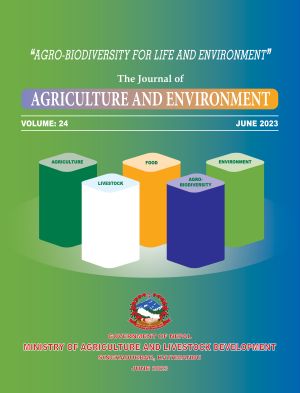Analysis of Resource Use Efficiency and Profitability of Wheat Production in Kailali District, Nepal
DOI:
https://doi.org/10.3126/aej.v24i01.57885Keywords:
Benefit-cost, cob-douglas production function, resource, returns to scale, superzoneAbstract
A study was done in 2021 in the Kailari rural minicipality, Gauriganga municipality, Godawari municipality, and Dhangadhi sub-metro politian city of the Kailali district to analyze the economics of wheat production. A total of 200 samples (50 from each village) were selected by using a simple random sampling technique. Most respondents (91 percent) had agriculture as a primary occupation. The area under wheat (Triticum aestivum) cultivation per household was 0.6 hectare with no significant difference between super zone of the Prime Minister Agriculture Modernization Project and non-super zone areas. The average production per household was 1814.5 kg whereas the yield was 3.3 mt/ha. The average cost of production was NRs. 64,526.62 per hectare and the B:C ratio was found to be 1.492. The Cobb-Douglas function showed that fertilizer, pesticide, land preparation, irrigation, and threshing costs were significant contributing factors to wheat production. The return to scale was found to be 0.261. An Index of severity was constructed to study the problems of wheat production in the study area. Weed infestation, lack of fertilizers, and insect pests were found to be three major problems.




